- 详细介绍
产品介绍:
动物视频跟踪和行为分析系统由高分辨率高帧频工业相机、专业动物行为采集及分析软件、红外背光板等组成,无需标记即可对鱼类、昆虫、哺乳动物、鸟类的行为进行分析。使用时可直接使用软件录制高质量的动物活动视频并对视频中的目标动物进行识别跟踪,获得目标动物的位置坐标(X坐标和Y坐标;单个动物可做3D跟踪,即包括XYZ坐标)及随时间变化的活动轨迹。系统可自动计算个体、处理组、感兴趣区域相关的20余种行为参数,并可导出叠加分析数据的图像和视频以便于使用者进行展示。

功能特点
采用工业相机,高分辨率、高帧频、超高速传输
可跟踪和分析鱼类、昆虫、哺乳动物、鸟类及更多
基于对比度或者背景减除法发现目标,无需标记物
可跟踪任意大小和形状的区域,如迷宫、水箱、呼吸室
对24孔板、48孔板、96孔板进行高通量跟踪和分析
3D跟踪,可导出3D坐标和路径
可结合游泳仪、植入式动物体温心率数据采集器等设备使用
系统配置
1、 USB3.1彩色工业摄像机
2、 专业级定焦镜头
3、 专业动物行为采集及分析软件LoliTrack5
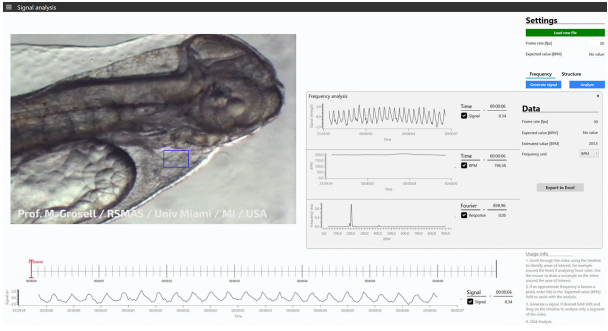
4、 红外背光板:用于透明多孔板和透明鱼缸等的底部照明,可消除反射,也可用于黑暗环境的视频记录
5、 动物活动室/池(选配):定制化水箱/鱼缸、活动室等
技术指标
1) 可自动计算参数包括:
√ 位置坐标(包括前、后、中线中心、重 心)
√ 移动距离
√ 速度和速率(X方向、Y方向)
√ 加速度(X方向、Y方向)
√ 移动方向
√ 身体取向
√ 身体弯曲
√ 转弯速率
√ 移动方向和身体取向变化速率
√ 活动/非活动时间和比例
√ 感兴趣区域花费时间和占比
√ 目标动物到感兴趣区域的距离
√ 个体间距离(IID),包括平均、众数和最小
2) 动物行为观测分析软件具备多种基于反差法和背景减除法的过滤功能。
3) 软件可跟踪单个区域或多个区域内的多个动物,即使动物具有相同(或不同)的形状、颜色和大小。
4) 可挑选单个个体用以跟踪和分析,而非所有的个体;可自定义跟踪时长,忽略或者只跟踪某段时间;具备批量分析功能。
5) 软件可识别特定身体的点位(如尾、头、中线中点、重 心),跟踪这些点用以研究运动学(如摆尾频率、身体摆动等)或者特定的行为(如身体取向、移动方向等)。

6) 软件具备频率(心率、摆尾频率等)计算和容积(心博量等)计算功能。

7) 软件具备错误自查功能,并提供手动纠错的快捷方式。
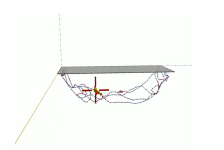
8) 软件兼容大部分相机和视频格式,具备视频记录和编辑工具,具备位置、速度、加速度和转弯速率的热图生成功能,并可输出叠加了分析结果的视频和图片,用户可自定义Excel数据文件输出内容。
9) 软件能够对两个相机或者两个视频文件的目标动物进行3D视频跟踪和行为分析,导出3D坐标和轨迹的3D模型,在其他软件做进一步的可视化和分析。
10) 系统可对24、48或96孔板中的生物进行跟踪和分析,对其活动水平或者运动进行快速筛选评估(常见于毒理学或者生物医学检测)。可输入用户自定义的处理描述以帮助分析数据。
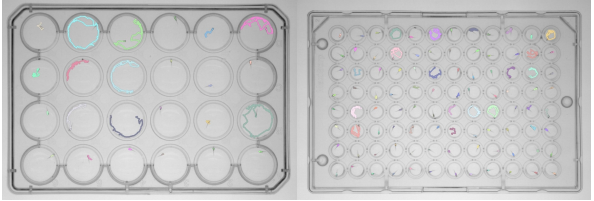
11) USB3.1彩色高清高帧频工业摄像机:紧凑设计,分辨率2592 x 1944 (5.04 MP),帧率48FPS,芯片尺寸1/2.5" (5.702 mm x 4.277 mm),重量33g。包括USB数据线、三脚架适配器、壁挂式支架安装。
12) 专业级定焦镜头:6mm、8mm、12mm、16mm、25mm、50mm焦距可选。
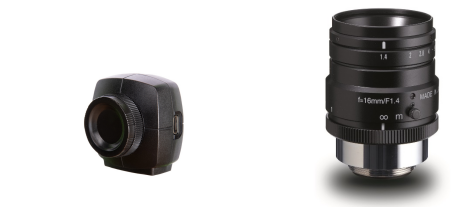
13) 红外背光板:大小25×11cm至113cm×51cm共5种尺寸可选,波长850nm。
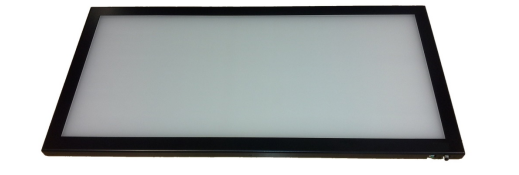
应用案例
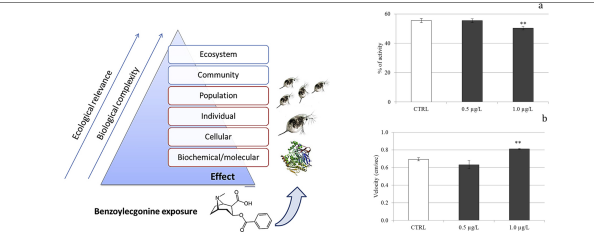
高浓度人体可 卡因代谢物苯甲酰爱康宁(BE)暴露使大型溞个体的活动性显著降低、游泳速率显著增大 (Environmental Pollution, 2018)
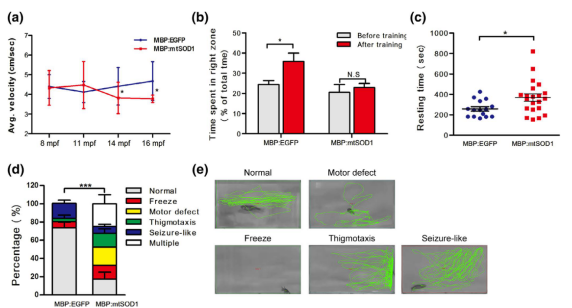
渐冻症斑马鱼模型表现出病症早期阶段异常行为增多、晚期阶段运动活性降低的表型(Glia, 2019)
产地:欧洲
参考文献
1. Bucking, C., Wood, C.M., and Grosell, M. (2012). Diet influences salinity preference of an estuarine fish, the killifish Fundulus heteroclitus. Journal of Experimental Biology 215, 1965–1974.
2. Di Cicco, M., Di Lorenzo, T., Fiasca, B., Ruggieri, F., Cimini, A., Panella, G., Benedetti, E., and Galassi, D.M.P. (2021). Effects of diclofenac on the swimming behavior and antioxidant enzyme activities of the freshwater interstitial crustacean Bryocamptus pygmaeus (Crustacea, Harpacticoida). Science of The Total Environment 799, 149461.
3. Dipp, V.R., Valles, S., Ortiz-Kerbertt, H., Suarez, J.V., and Bardullas, U. (2018). Neurobehavioral Alterations in Zebrafish Due to Long-Term Exposure to Low Doses of Inorganic Arsenic. Zebrafish 15, 575–585.
4. Hansen, L.R., and Roslev, P. (2016). Behavioral responses of juvenile Daphnia magna after exposure to glyphosate and glyphosate-copper complexes. Aquatic Toxicology 179, 36–43.
5. Herbert, N.A., Skjæraasen, J.E., Nilsen, T., Salvanes, A.G.V., and Steffensen, J.F. (2011). The hypoxia avoidance behaviour of juvenile Atlantic cod (Gadus morhua L.) depends on the provision and pressure level of an O2 refuge. Mar Biol 158, 737–746.
6. Huang, Y., Cartlidge, R., Walpitagama, M., Kaslin, J., Campana, O., and Wlodkowic, D. (2018). Unsuitable use of DMSO for assessing behavioral endpoints in aquatic model species. Science of The Total Environment 615, 107–114.
7. Khor, Y.M., Soga, T., and Parhar, I.S. (2013). Caffeine neuroprotects against dexamethasone-induced anxiety-like behaviour in the Zebrafish (Danio rerio). General and Comparative Endocrinology 181, 310–315.
8. Kim, S., Chung, A., Na, J.E., Lee, S.J., Jeong, S.H., Kim, E., Sun, W., Rhyu, I.J., and Park, H. (2019). Myelin degeneration induced by mutant superoxide dismutase 1 accumulation promotes amyotrophic lateral sclerosis. Glia. 23669.
9. Kruusmaa, M., Gkliva, R., Tuhtan, J.A., Tuvikene, A., and Alfredsen, J.A. Salmon behavioural response to robots in an aquaculture sea cage. Royal Society Open Science 7, 191220.
10. Millot, S., Cerqueira, M., Castanheira, M.-F., Øverli, Ø., Oliveira, R.F., and Martins, C.I.M. (2014). Behavioural Stress Responses Predict Environmental Perception in European Sea Bass (Dicentrarchus labrax). PLOS ONE 9, e108800.
11. Nam, T.-S., Zhang, J., Chandrasekaran, G., Jeong, I.Y., Li, W., Lee, S.-H., Kang, K.-W., Maeng, J.-S., Kang, H., Shin, H.-Y., et al. (2020). A zebrafish model of nondystrophic myotonia with sodium channelopathy. Neuroscience Letters 714, 134579.
12. Nielsen, M.E., and Roslev, P. (2018). Behavioral responses and starvation survival of Daphnia magna exposed to fluoxetine and propranolol. Chemosphere 211, 978–985.
13. Parolini, M., De Felice, B., Ferrario, C., Salgueiro-González, N., Castiglioni, S., Finizio, A., and Tremolada, P. (2018). Benzoylecgonine exposure induced oxidative stress and altered swimming behavior and reproduction in Daphnia magna. Environmental Pollution 232, 236–244.
14. Qian, L., Liu, J., Lin, Z., Chen, X., Yuan, L., Shen, G., Yang, W., Wang, D., Huang, Y., Pang, S., et al. (2020). Evaluation of the spinal effects of phthalates in a zebrafish embryo assay. Chemosphere 249, 126144.
15. Qian, L., Qi, S., Wang, Z., Magnuson, J.T., Volz, D.C., Schlenk, D., Jiang, J., and Wang, C. (2021). Environmentally relevant concentrations of boscalid exposure affects the neurobehavioral response of zebrafish by disrupting visual and nervous systems. Journal of Hazardous Materials 404, 124083.
16. Rountos, K.J., Kim, J.J., Hattenrath-Lehmann, T.K., and Gobler, C.J. (2019). Effects of the harmful algae, Alexandrium catenella and Dinophysis acuminata, on the survival, growth, and swimming activity of early life stages of forage fish. Marine Environmental Research 148, 46–56.
17. Seebacher, F., Kazerouni, E.G., and Franklin, C.E. (2016). Ultraviolet B radiation alters movement and thermal selection of zebrafish (Danio rerio). Biology Letters 12, 20160258.
18. Sotto, R.B.D., Medriano, C.D., Cho, Y., Kim, H., Chung, I.-Y., Seok, K.-S., Song, K.G., Hong, S.W., Park, Y., and Kim, S. (2017). Sub-lethal pharmaceutical hazard tracking in adult zebrafish using untargeted LC–MS environmental metabolomics. Journal of Hazardous Materials 339, 63–72.
19. Yang, F., Zeng, Y., Huai, W., Zha, W., and Wan, Y. (2022). Responses of cyprinid (Ancherythroculter nigrocauda) to flow with a semi-circular cylinder patch. Journal of Fish Biology 100, 884–893.
20. 郝文超, 王从锋, 刘慧杰, 王瑶, and 冯三杰 (2018). 不同运动模式下鲢幼鱼游泳特性研究. 淡水渔业 48, 3–9.
- 产品优势
- 动物视频跟踪和行为分析系统由高分辨率高帧频工业相机、专业动物行为采集及分析软件、红外背光板等组成,无需标记即可对鱼类、昆虫、哺乳动物、鸟类的行为进行分析。使用时可直接使用软件录制高质量的动物活动视频并对视频中的目标动物进行识别跟踪,获得目标动物的位置坐标(X坐标和Y坐标;单个动物可做3D跟踪,即包括XYZ坐标)及随时间变化的活动轨迹。系统可自动计算个体、处理组、感兴趣区域相关的20余种行为参数,并可导出叠加分析数据的图像和视频以便于使用者进行展示。







 VIP会员
VIP会员

 粤公网安备44196802000105号
粤公网安备44196802000105号